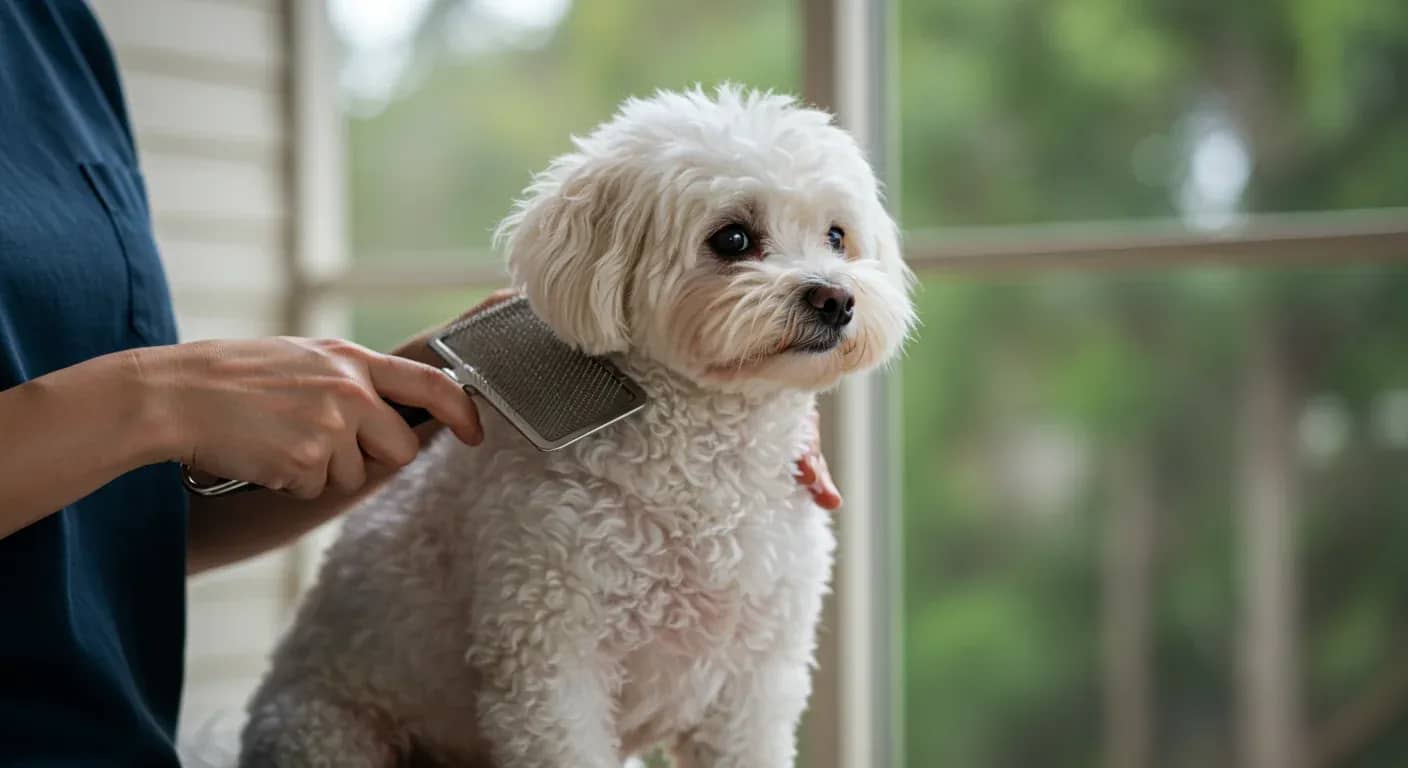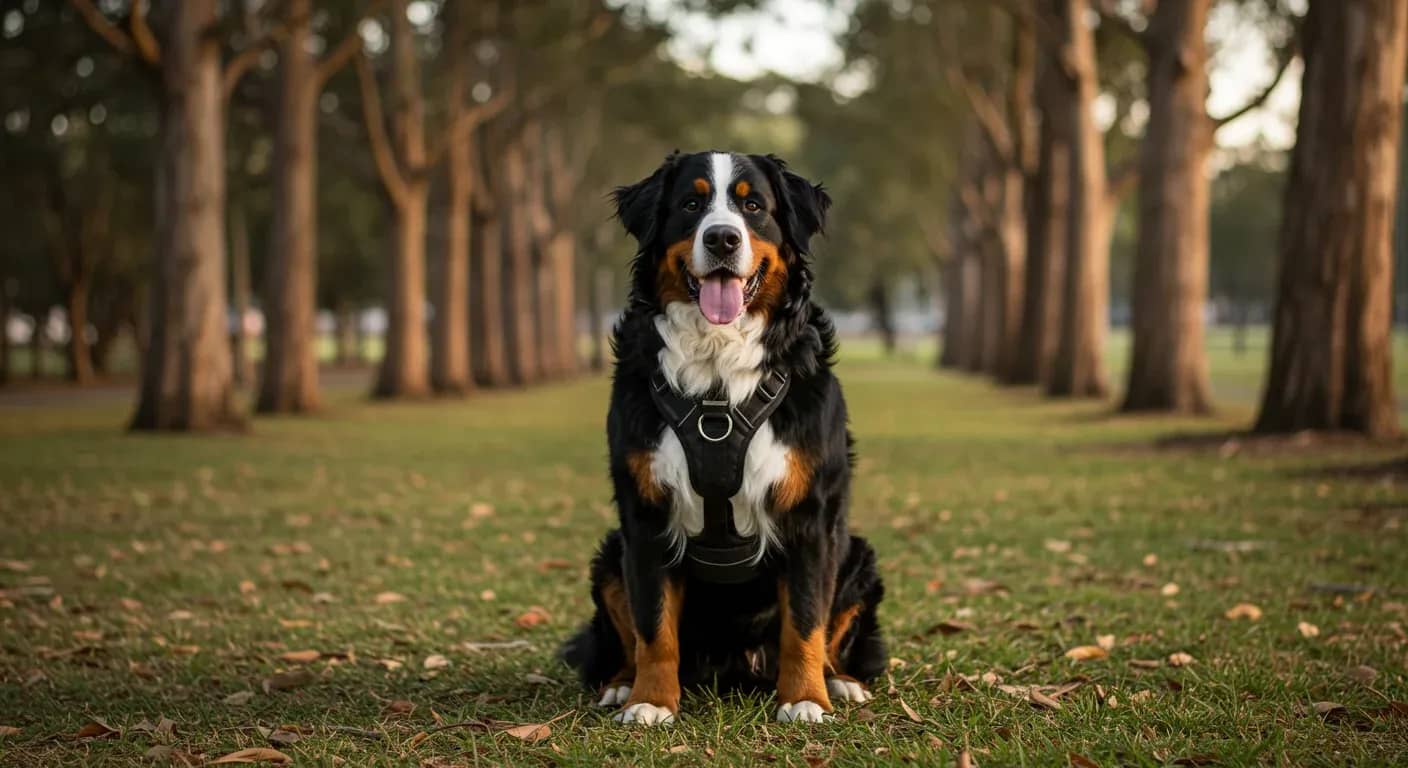At a glance
- Norwich Terriers require hand stripping rather than clipping to maintain their distinctive wiry coat texture and vibrant colour
- Pet dogs need hand stripping twice yearly (spring and autumn), while show dogs require light stripping every 5-7 days
- Regular brushing 2-3 times weekly prevents matting and keeps the coat healthy between stripping sessions
- Finding groomers experienced in hand stripping can be challenging, making it worthwhile to learn the technique yourself
Understanding your Norwich's unique coat
You might notice that your Norwich feels different from other dogs when you run your hand through their coat. That distinctive texture isn't accidental. These dogs developed their hard, wiry outer coat and soft, dense undercoat through generations of working in rough terrain, where their coat provided essential protection.
This double-layered coat system makes Norwich grooming quite different from most breeds. The colour pigment lives in the tips of those outer hairs, which means traditional clipping or scissoring actually cuts away the vibrant colour and softens the texture that defines the breed. Research shows that maintaining the proper coat requires hand stripping, where dead hairs are plucked by hand rather than cut.
Many Norwich owners worry when they first hear about hand stripping, imagining it must be painful for their dog. In reality, you're only removing hairs that are ready to come out naturally. A simple test involves rubbing a latex glove over the coat. Hairs that stand up are ready for removal and will come out easily without discomfort.
Brushing techniques that work

Regular brushing forms the foundation of Norwich coat care, even though it can't replace hand stripping. You'll want to brush several times a week to remove loose hairs, prevent matting, and distribute the natural oils that keep the coat healthy.
Start with a slicker brush for the main body, working in the direction of hair growth from head to tail. Pay particular attention to areas that mat easily: under the legs, around the beard, and anywhere the coat rubs against collars or harnesses. Follow up with a metal comb, especially around the beard and leg furnishings where the hair tends to be longer and more prone to tangling.
The key is consistency rather than intensity. Short, regular brushing sessions work better than occasional marathon grooming attempts. Most dogs learn to enjoy this routine when it becomes a predictable part of their week.
Mastering hand stripping basics

Hand stripping might seem daunting initially, but the technique becomes natural with practice. The goal is removing dead outer hairs and excess undercoat so new, healthy hair can grow in the follicles. For pet dogs, this typically happens twice yearly in spring and autumn when the coat naturally "blows" or loosens.
You can use your fingers or a coarse stripping knife to pluck hairs that are ready to come out. Focus on the long surface hairs first, then thin (rather than fully strip) the face and legs to maintain proper framing. Areas like inside the ears and around the anus are better handled with blunt scissors for hygiene and comfort.
Show dogs or those maintaining a "rolled" coat require a different approach, with light stripping every 5-7 days to maintain consistent texture and length. This advanced technique often benefits from professional guidance, especially when you're learning the nuances of coat management.
Creating a practical grooming schedule
Your grooming schedule will depend largely on whether your dog is a beloved pet or destined for the show ring. Pet Norwich owners typically find success with brushing 2-3 times weekly and hand stripping twice yearly during the natural shedding seasons.
Show dogs require more intensive maintenance, often involving daily or weekly brushing and light stripping every 5-7 days to maintain that perfectly "rolled" coat. This continuous process keeps the coat at an optimal length and texture for competition.
Bathing should happen only as needed to keep your dog and home clean. Over-bathing strips the natural oils that protect the skin and coat. When you do bathe, use a mild dog shampoo and towel dry thoroughly rather than using harsh blow-drying techniques.
Don't forget the other essentials: regular ear cleaning with a vet-approved solution like Nolvasan Otic Cleansing Solution, nail trimming as needed, and regular teeth brushing to prevent dental disease.
Solving common grooming challenges
Many Norwich owners encounter similar grooming obstacles, particularly around matting and finding appropriate professional help. Matting typically develops in predictable areas: the beard, legs, and anywhere the coat experiences friction. Prevention through regular brushing works far better than trying to remove established mats.
When you do find tangles, work them out gently with a slicker brush and metal comb. Severe matting often requires professional help to avoid skin irritation or injury. Sometimes the kindest approach involves starting fresh with a full strip down to the undercoat, then maintaining the new growth properly.
Finding groomers experienced with hand stripping presents another common challenge. Many groomers don't offer this service or charge significantly more for the time-intensive technique. Learning to hand strip yourself often proves more practical and economical in the long run.
If your dog's coat has been clipped previously, don't despair. While the texture will be softer and the colour may have faded, returning to hand stripping will gradually restore the proper coat characteristics over several growth cycles.
Professional help versus DIY grooming
The decision between professional grooming and learning to do it yourself often comes down to availability and cost. Professional hand stripping typically costs more than standard grooming, and skilled terrier groomers can be difficult to find in some areas.
Learning the technique yourself requires an initial investment in proper tools: a good slicker brush, metal comb, and coarse stripping knife. Quality tools from brands like Mars Coat King or Master Grooming Tools represent a one-time moderate expense that pays for itself over time.
Online tutorials and breed clubs provide valuable learning resources, though nothing replaces hands-on experience. Many owners find success starting with guidance from an experienced groomer or breed mentor, then maintaining the coat themselves between professional sessions.
For skin issues or persistent problems, don't hesitate to consult your veterinarian. Conditions like dry, scaly skin might benefit from veterinary shampoos like DVM Seborex, while other issues may require medical intervention rather than grooming solutions.
Setting your dog up for grooming success
Starting grooming routines early makes an enormous difference in your dog's comfort and cooperation throughout their life. Puppies should be gradually introduced to handling, brushing, and eventually hand stripping as their adult coat develops.
Initial grooming sessions for young dogs might involve a full strip down to the undercoat, which can look quite dramatic but encourages proper coat growth patterns. Be patient during this process, as it can take several months for the new coat to develop its full texture and colour.
Even adult dogs new to proper grooming can learn to accept and even enjoy the routine. Keep early sessions short and positive, gradually building up duration and intensity as your dog becomes comfortable with the process. Most dogs find the attention pleasant once they understand what to expect.
Remember that grooming serves purposes beyond appearance. Regular handling helps you notice changes in your dog's skin, lumps, or other health concerns early. The bonding time strengthens your relationship while maintaining your dog's comfort and health throughout their life.



